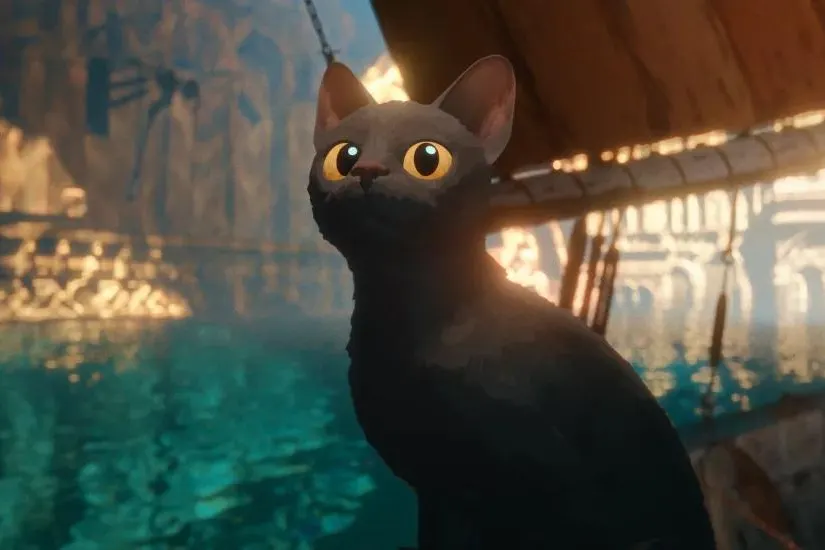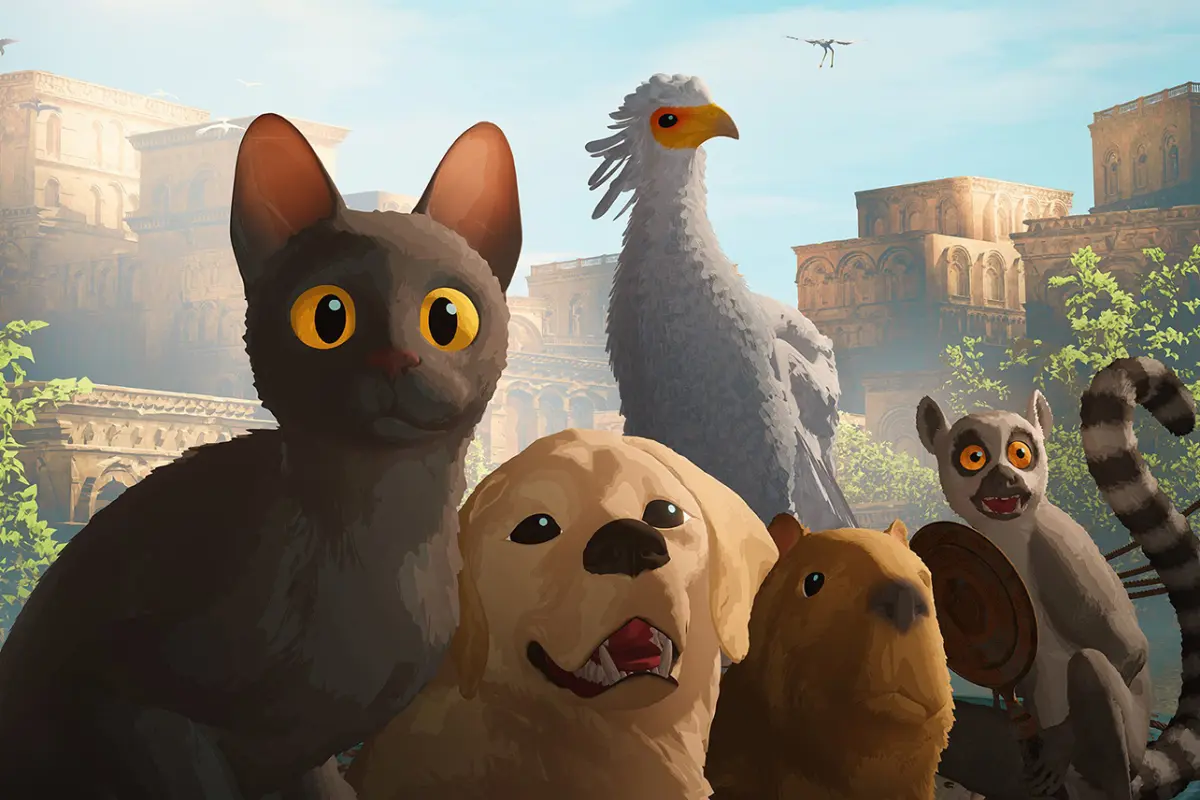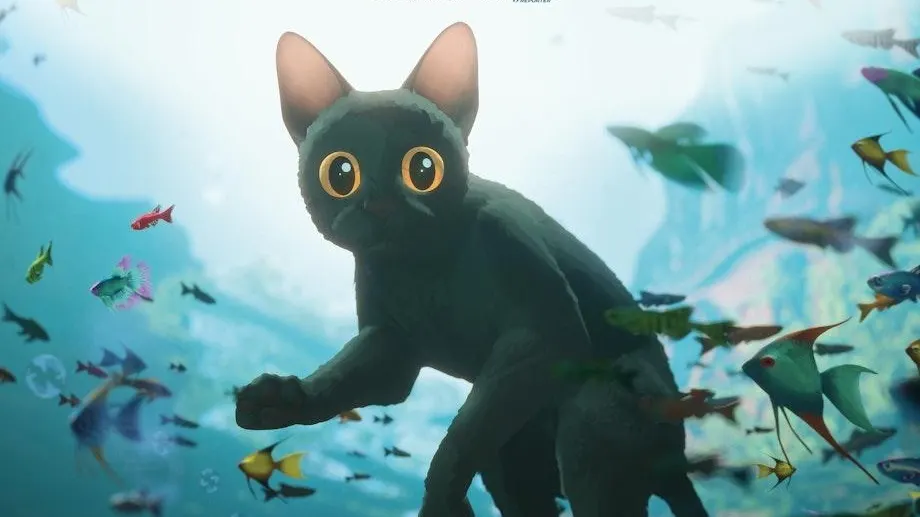Latvia’s Oscar submission for Best International Feature in 2024, Flow (Straume), is a visually stunning animated film that defies conventional storytelling.
Stripping away dialogue and human-like expressions, it crafts a deeply immersive experience through striking imagery and atmosphere. At its core, Flow is a meditation on survival, transformation, and the interconnectedness of life in an altered world.
Flow Movie Ending Explained
Set in a future where humans have vanished, the film follows a black cat steering an unfamiliar and desolate terrain. Once a domestic pet, it now roams alone in search of food. A tense encounter with a pack of dogs forces it to flee, leading to the discovery of an impending disaster—a great flood rising over the ruins of civilization.
Finding refuge on a drifting sailboat, the cat soon gains reluctant companions: a capybara, a ring-tailed lemur, and a secretarybird. Together, this unlikely group embarks on an uncertain voyage across the waters of a transformed Earth.
Though humans never appear, their remnants are everywhere. Abandoned cities, decaying statues, and scattered artifacts hint at a lost civilization. The cause of their disappearance remains a mystery, but environmental disaster seems a likely culprit.
The presence of animals from different continents raises questions—were they once captive in zoos, or has nature reshaped the planet in unforeseen ways? These ambiguities add to the film’s haunting, dreamlike quality, reinforcing a world where past and present blur.

Also Read: Eternals Ending Explained: What’s the Future of the Eternals After the Celestial’s Judgment?
Symbolism of the Animals
The animals in Flow are intentionally non-anthropomorphized, but they can be interpreted as symbols of various human traits and personalities. The black cat is intelligent, inquisitive, and highly adaptable, making it the perfect protagonist. It represents a sharp and curious individual, always looking for solutions in times of trouble.
The capybara, on the other hand, is calm and level-headed, yet it remains somewhat indifferent to its surroundings, only acting when necessary. The secretarybird symbolizes a person who is strong-willed and unwavering in their principles, even at the cost of their relationships.
The lemur embodies a character focused on materialism, always hoarding treasures without understanding their true value. The dog in the group acts as the comic relief, craving attention and engaging in playful antics.
Instinct, Adaptation, and the Will to Survive
Each animal in Flow reflects a different approach to survival. The black cat is resourceful and alert, adapting swiftly to challenges. The capybara’s calm demeanor symbolizes resilience, floating through change without resistance.

The secretarybird, independent and strong-willed, prefers solitude, while the lemur’s habit of hoarding objects suggests a lingering attachment to material things. A playful dog, briefly part of the group, injects fleeting moments of joy amid the struggle.
Among these figures, the whale emerges as the film’s most enigmatic presence. Acting as a silent guardian, it saves the cat from drowning, hinting at a deeper, almost mystical connection to the world’s shifting balance. Through these interactions, Flow explores the tension between isolation and coexistence, illustrating how survival often depends on unexpected alliances.
Moments of Reflection, Symbols of Transformation
Despite its wordless nature, Flow conveys profound emotions through surreal imagery. One dream sequence shows the cat encircled by a distressed deer, evoking its inner fears.
The most striking moment arrives with the secretarybird’s demise, vanishing into a swirl of colors—an abstract yet poignant depiction of death. These artistic choices boost the film beyond a simple survival tale, inviting viewers to reflect on life’s impermanence.
In the final scene, the animals pause to see their reflections in the water. For the black cat, which has long searched for meaning in its own mirrored image, this moment signifies something new—a shared identity, a collective existence. Flow closes on this quiet yet powerful note, reminding us that even in an unpredictable world, connection and adaptation remain essential.
Also Read: Now You See Me Ending Explained: What’s the Secret Behind the Horsemen’s Illusions?




